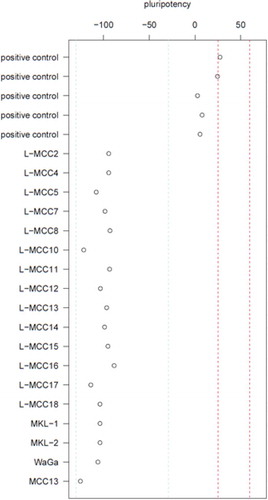Figures & data
Figure 1. Epigenetic age of MCC cells is significantly younger compared to the chronological age of MCC patients

Table 1. Summary of the clinicopathological data of the MCC patients and tissues including DNAmAge
Figure 2. MCCs are not pluripotent

